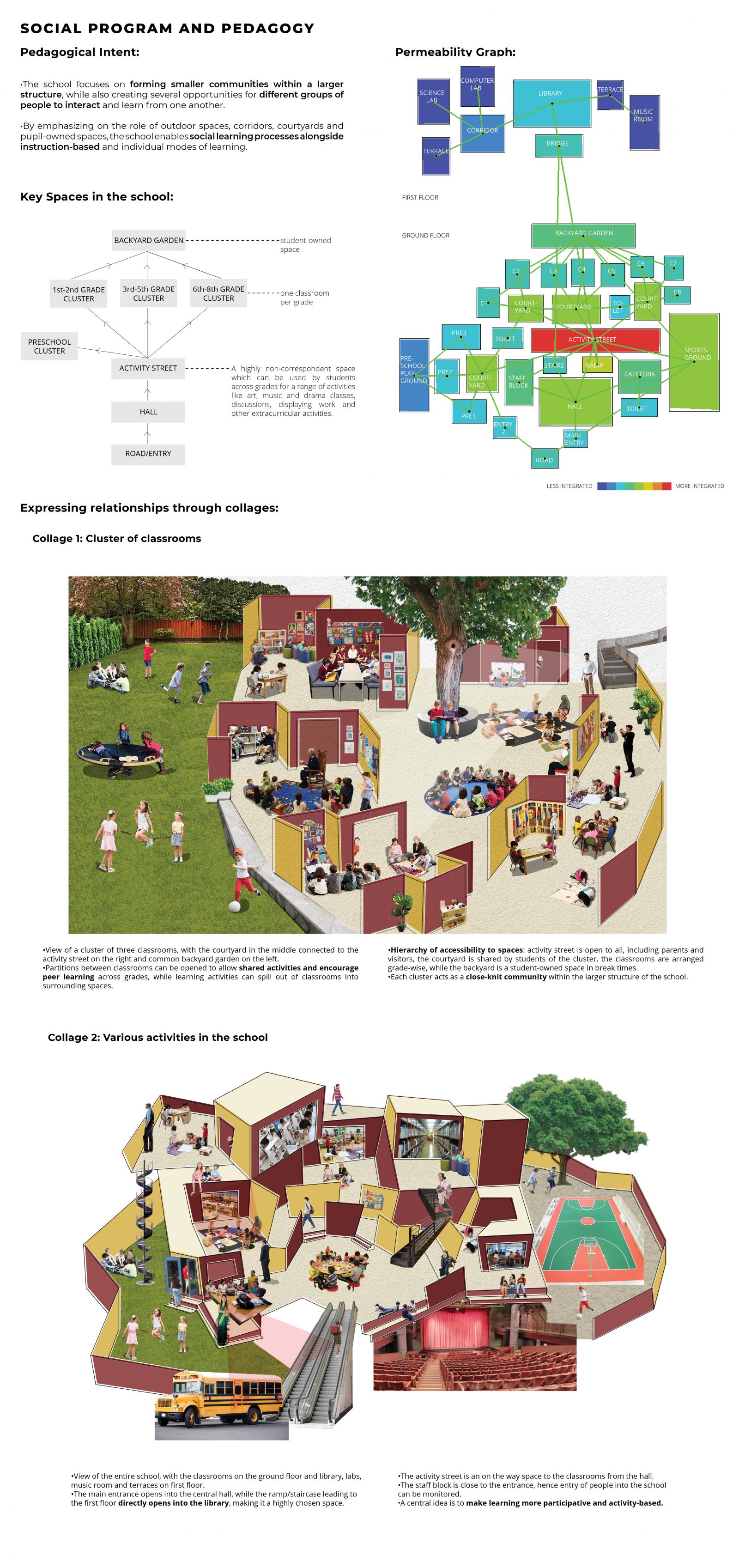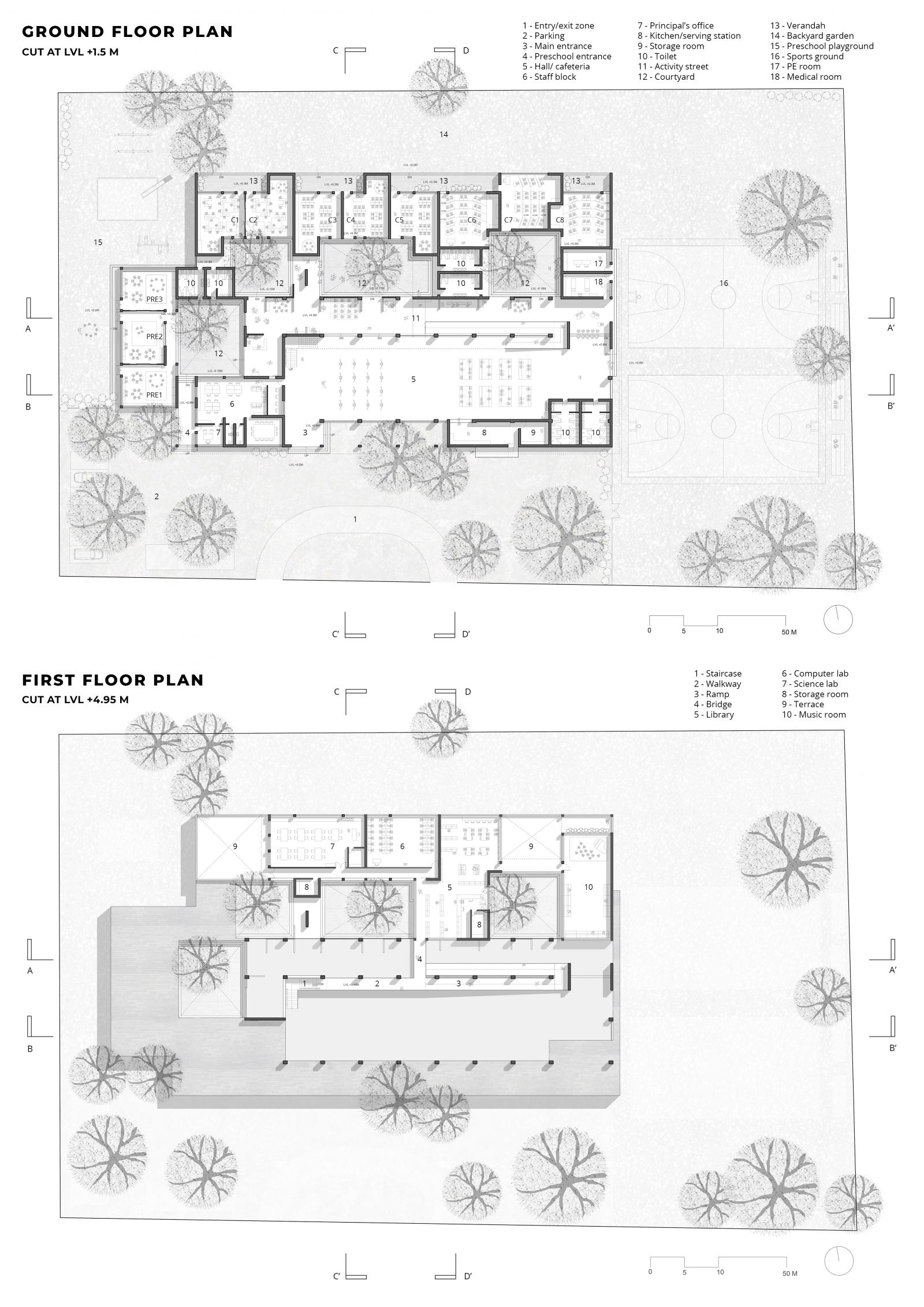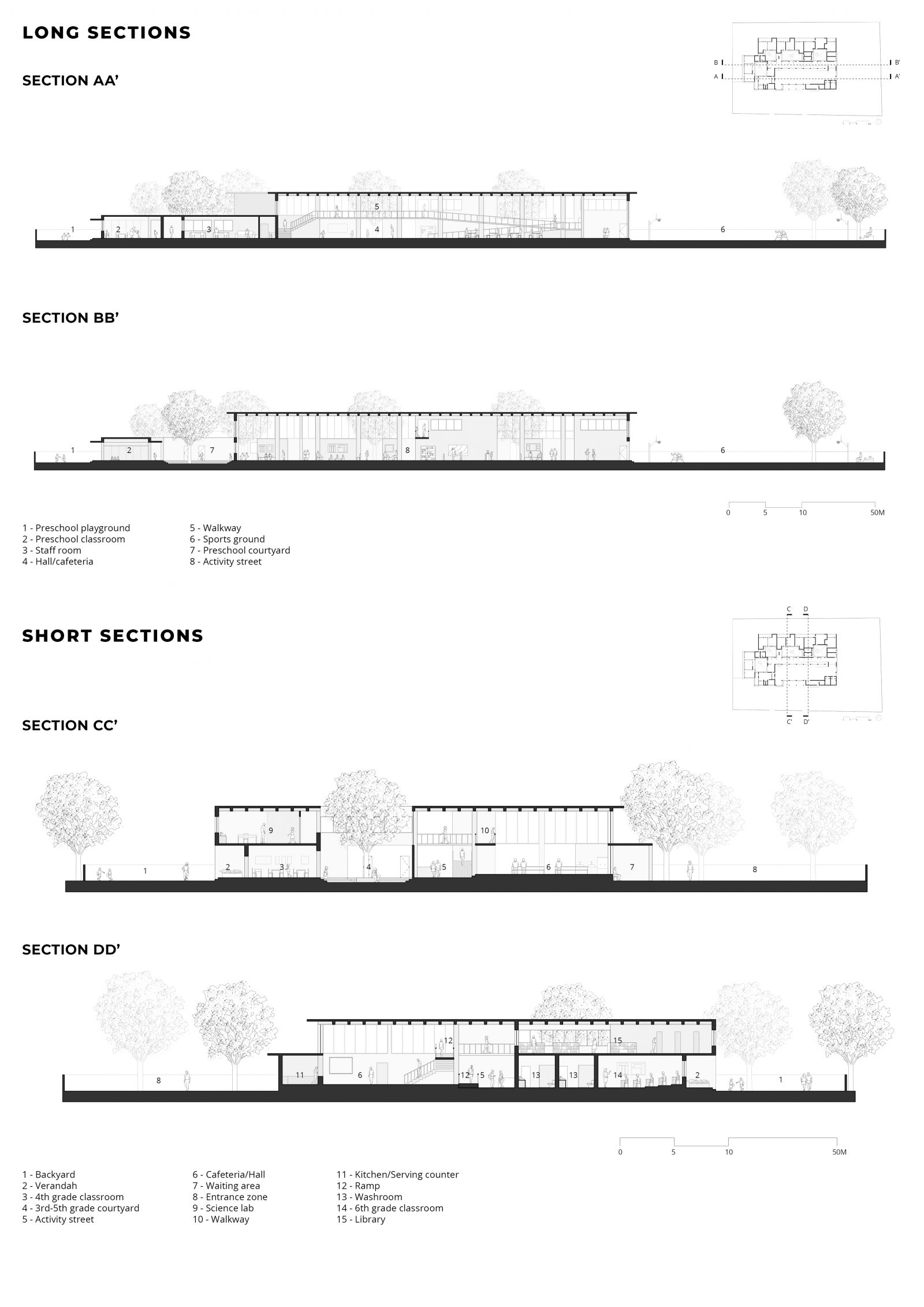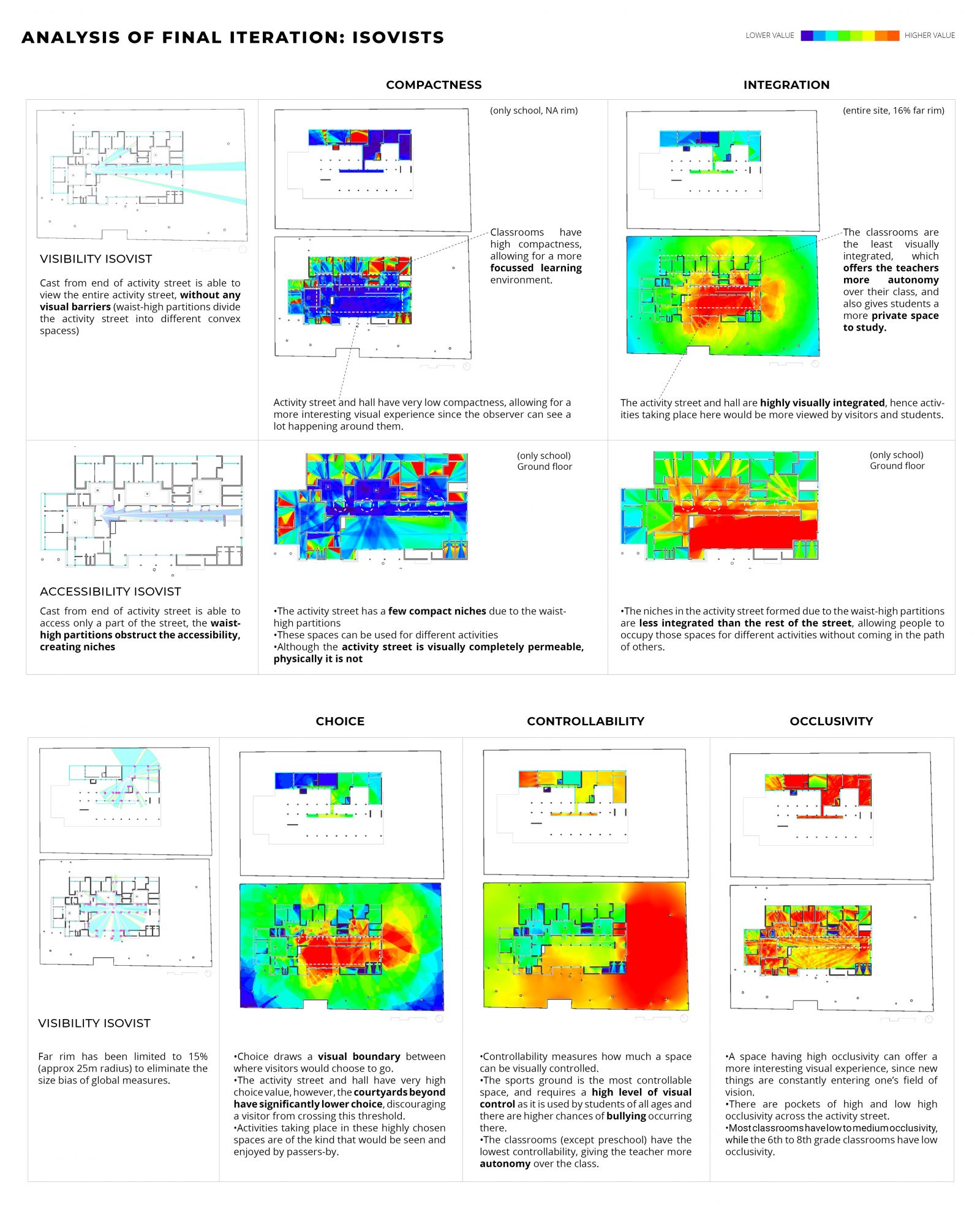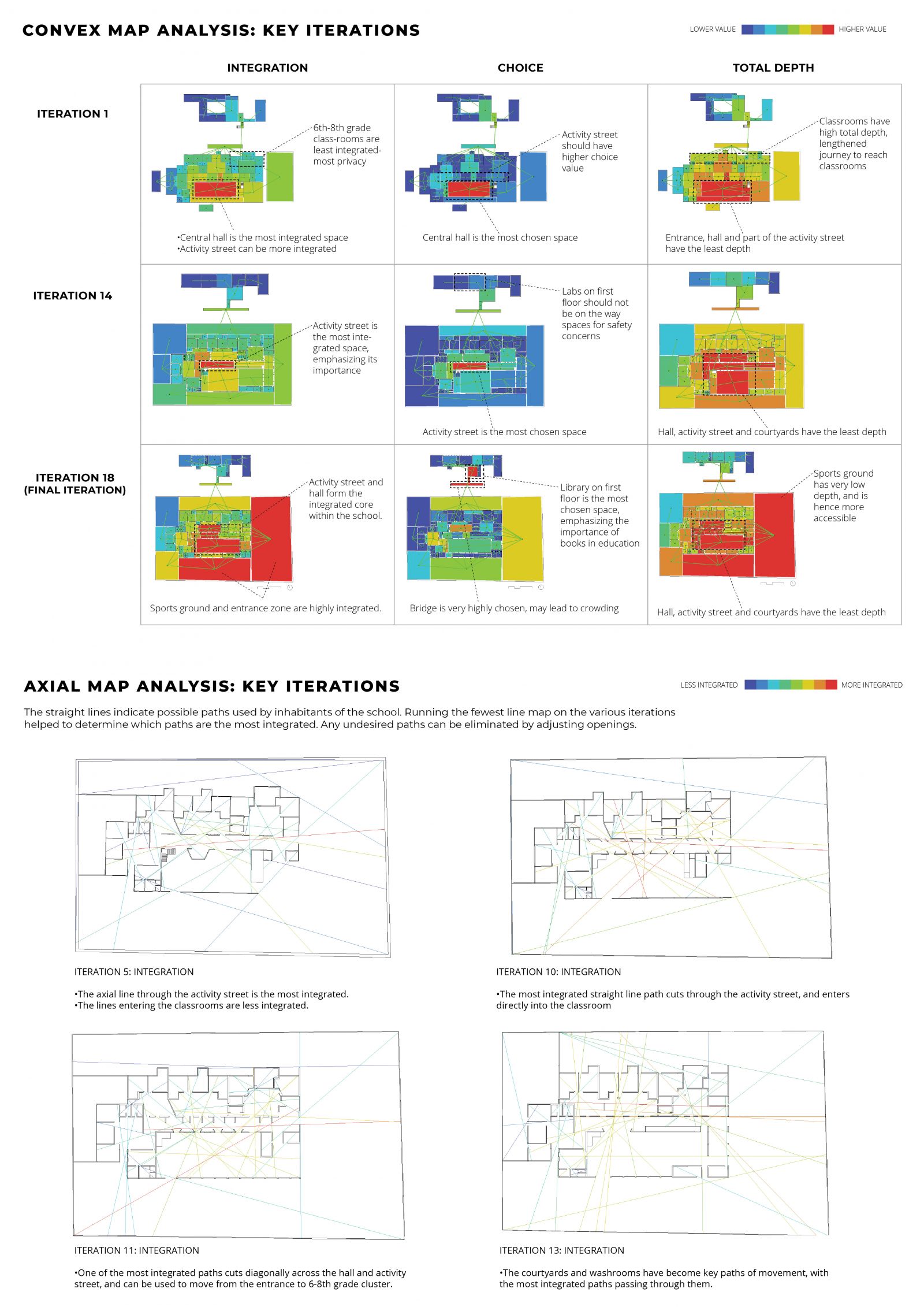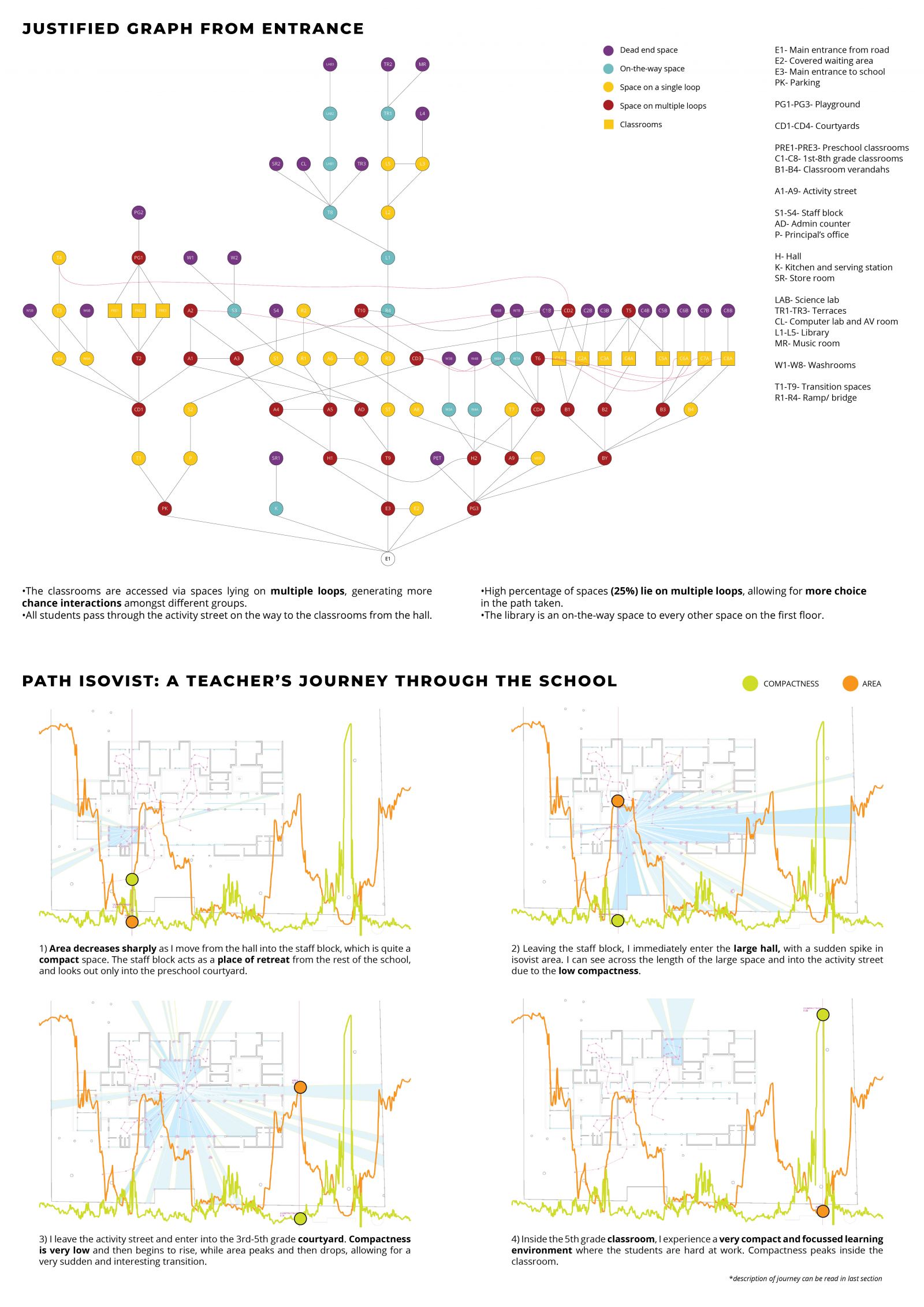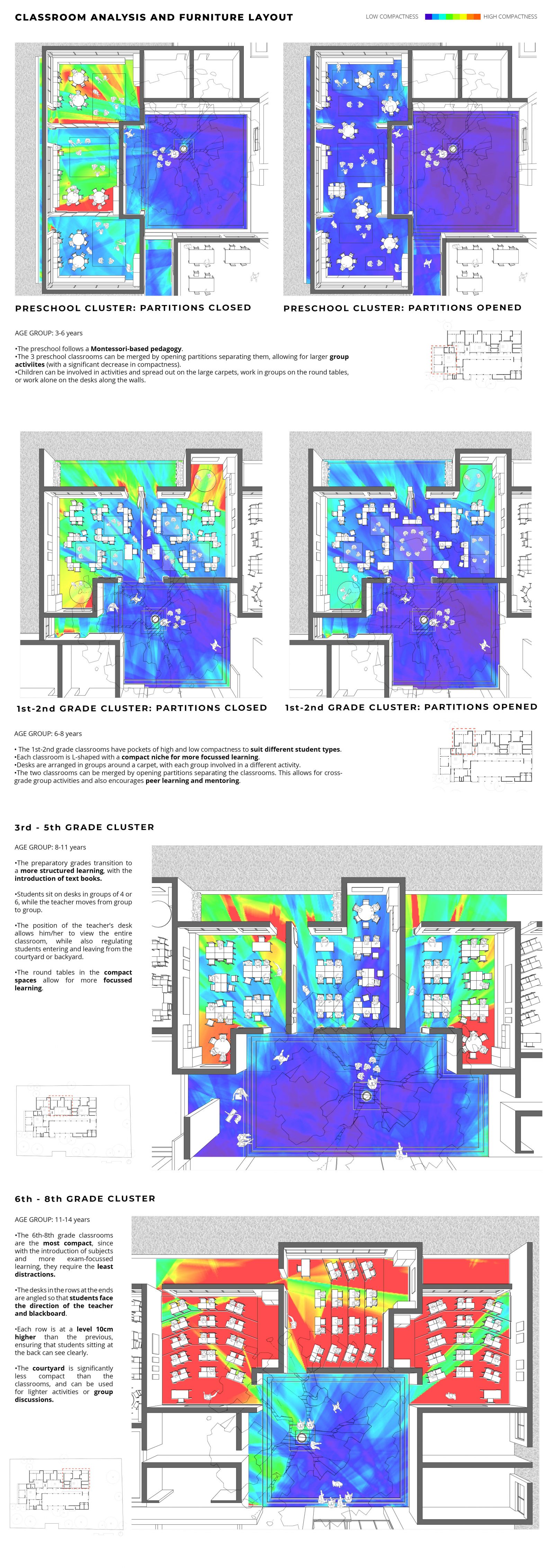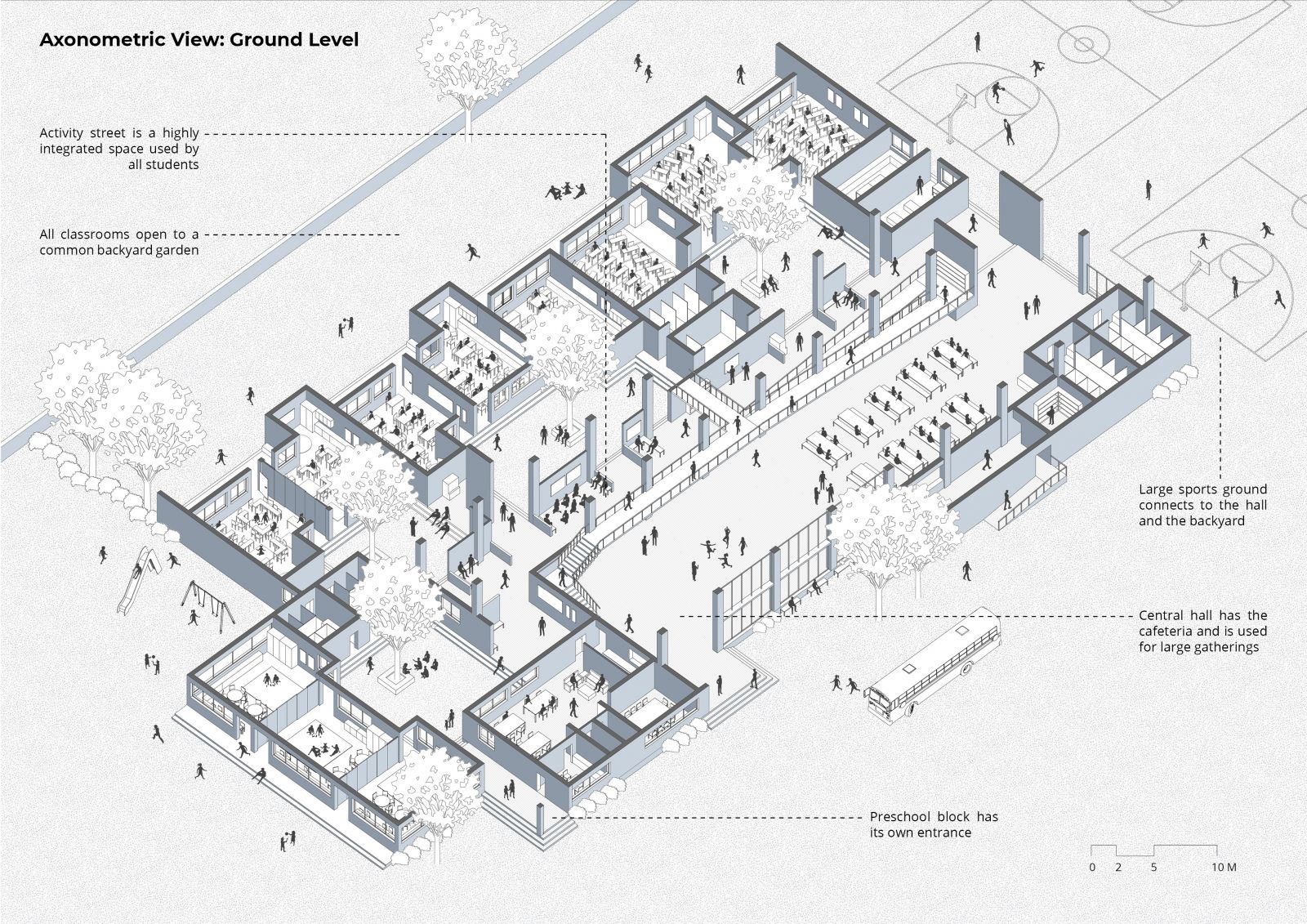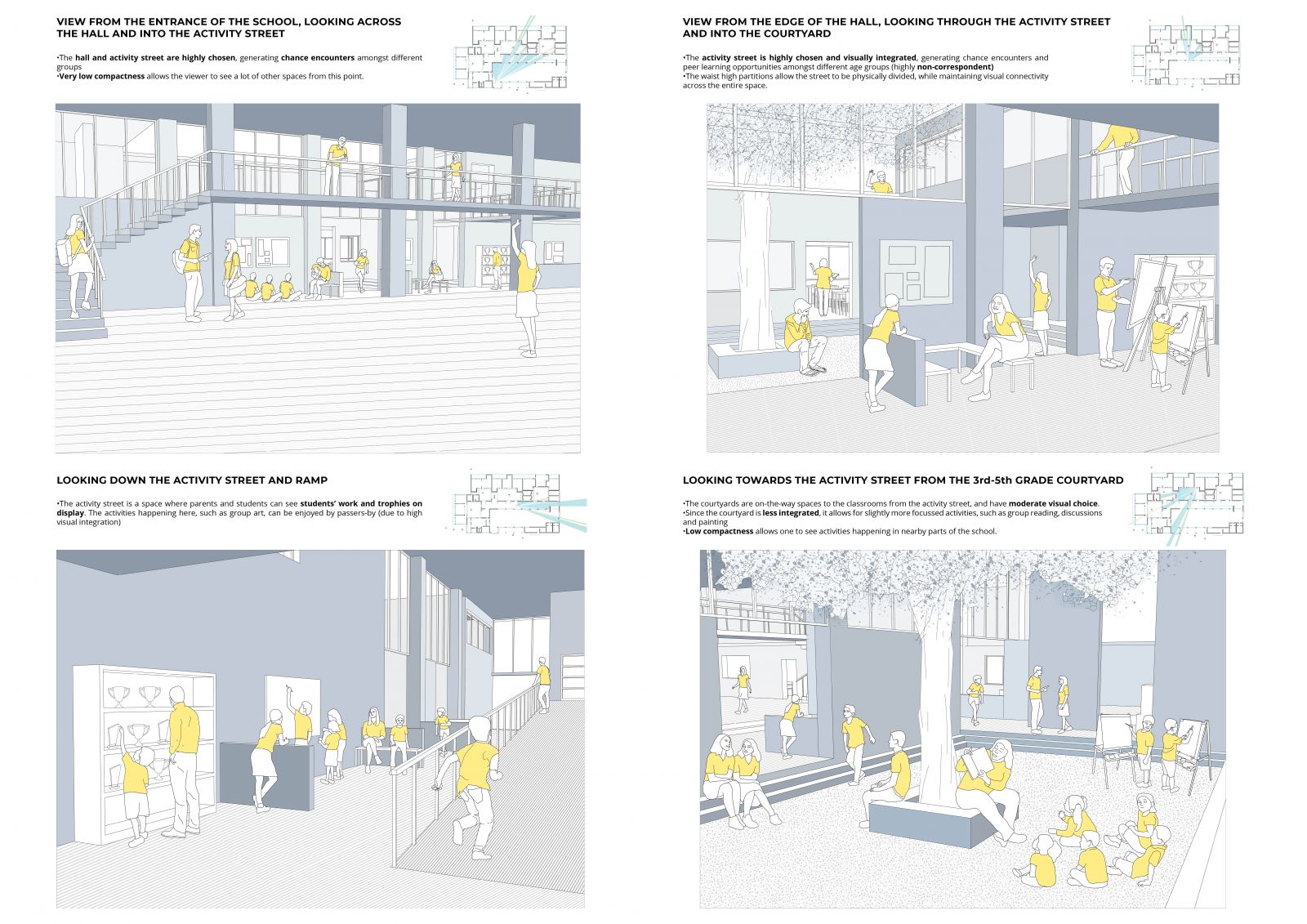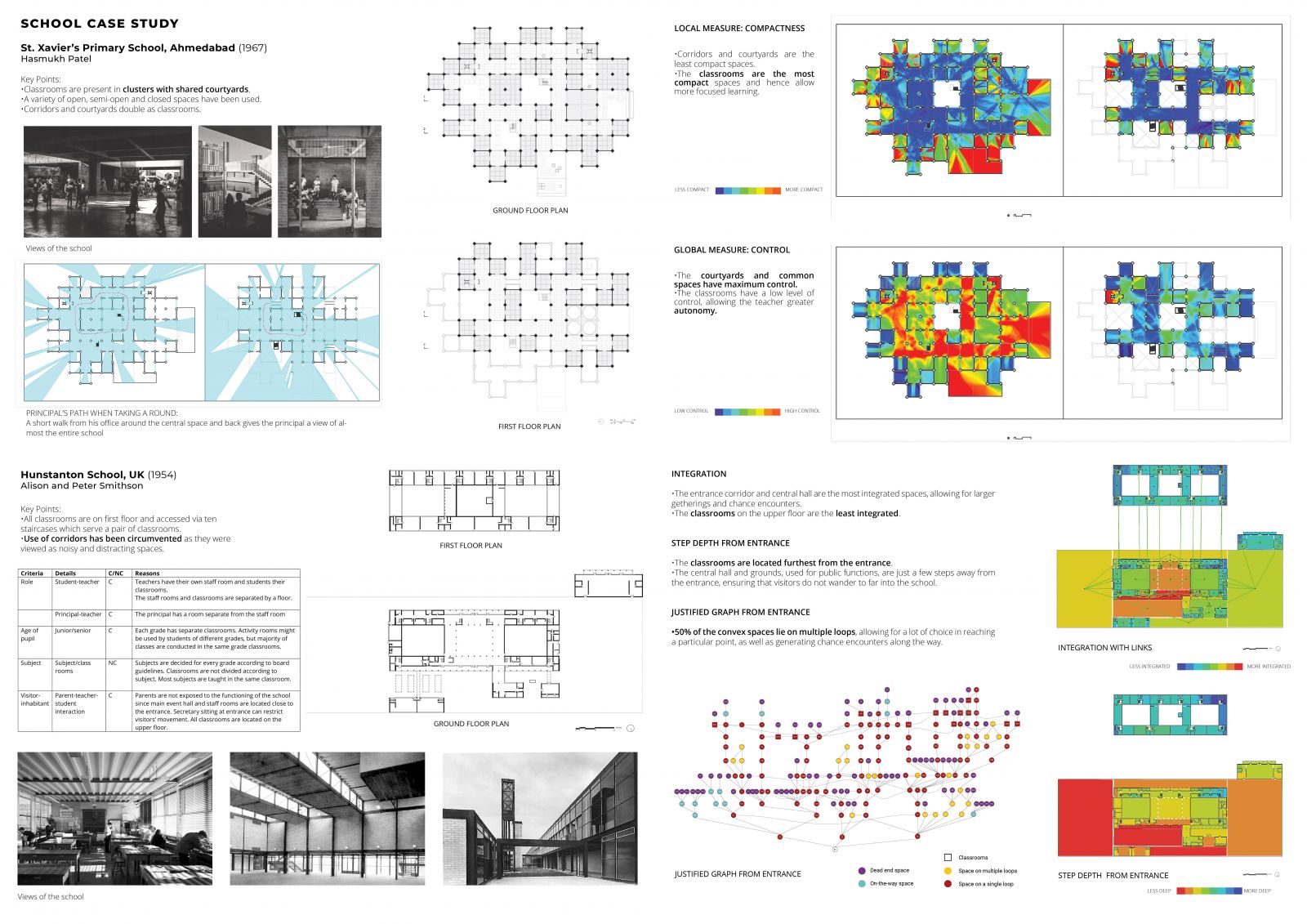Your browser is out-of-date!
For a richer surfing experience on our website, please update your browser. Update my browser now!
For a richer surfing experience on our website, please update your browser. Update my browser now!
The main intent behind the school design was to use space planning to form smaller communities within the larger school structure, while also creating several spaces which encourage different groups to interact and learn from one another. Space syntax methods (DepthMapX, Isovists) were extensively used to analyze iterations in plan and deduce possibilities of the use of spaces and the effects on the social aspect of learning. Classrooms are organized in clusters of 2-3 grades with a shared courtyard, allowing for interaction amongst students of different ages, while the “activity street” attempts to make learning more participative and activity based.
View Additional Work